All about planting gladioli and the rules of caring for them
Noble flower-swords with truly royal grandeur have become a symbol of a worthy victory, the name of which contains the eternal memory of faithful warrior friends, who were turned into gladiators by someone else's will, but not broken and not stained with betrayal. Among the plants that traditionally decorate flower beds and front gardens, few can compare with them in popularity, but how to plant gladioli correctly so that their cultivation is enjoyable?
It is impossible to call these flowers capricious plants that require special care. Leading their history from the warm tropical and subtropical forests of Africa and the Mediterranean, they have adapted to different climatic conditions and spread throughout the world. Gladioli are planted in the USA, Europe, Central Asia, China, the Urals, the Far East, and Western Siberia. There are many types of them: tiled, marsh, sowing, ordinary, Byzantine, Ghent, Japanese - it is difficult not to find among them one that will suit your taste.
Lighting
Even beginners in floriculture are successfully growing gladioli in the country. But some points will have to be taken into account when breeding them. The main one is site selection. If done correctly, plants form large and numerous buds on time, and the flowering period will last longer. The planting material will also be of higher quality and healthier.
Gladioli are photophilous, for their normal development it is important that the sun's rays fall on the site in large quantities. When shaded from the south, they will not bud, or flowering will be poor, even if properly cared for. And if there is not enough light from the east, then the plants will bloom 15-20 days later than expected.
Advice
If the site is not too sunny, there are two ways out - to plant gladioli in high beds or to equip a vertical flower bed, placing the bulbs on its top.
In the absence of other options, flowers can be planted on the north or west side, providing them with maximum care. So that they do not suffer from drafts, plantings are located near shrubs. Another way of protection is to place a border of tall plants next to it.
Soil requirements
Gladiolus bulbs are sensitive to waterlogging of the soil, so you need to choose a well-drained area with a low level of groundwater. Its surface may be flat, but it is better if it slopes slightly to the south. Slightly acidic and neutral soils are suitable for gladioli (pH in the range of 6.5-6.8). In alkaline soil, plants lack iron, and their leaves turn yellow, the buds open poorly, and there is a high likelihood of developing fusarium. If the soil in the country is acidic, it needs to be neutralized. Usually they use
- a piece of chalk;
- eggshell;
- dolomite flour.
On 1 m² of the surface of the site, 150-200 g of the product are scattered, after which the soil is dug up.
Gladioli are also demanding on the structure of the soil, it should be light, loose and contain sand and clay. Enrich it with humus and well-rotted compost. If the soil in the area warms up quickly, the soil can be dug up right before planting the bulbs, after scattering dry ones over it phosphorus-potassium fertilizers... In regions with an arid climate, in order to retain moisture in the ground, it is correct to carry out serious digging in the fall, and in the spring the soil is only loosened.
Advice
Gladioli will like it if the site was planted with vegetables, legumes or perennial grasses before them.And the soil after root crops, cruciferous varieties, mustard or asters will not be good enough for them.
Preparing the bulbs
Breeding gladioli, preparation for planting of which begins in 3-4 weeks and requires patience, is not so easy. First, the bulbs are cleaned of the protective scales that tightly cover them. They do this carefully, because it is very easy to damage the delicate sprouts. Planting material with signs of disease and mechanical damage is discarded. Then the selected bulbs are placed in a warm and well-lit room in one layer so that the sprout is directed upwards. Planting gladioli in the ground is carried out only after they are treated with fungicides, which will destroy possible pests (thrips, fungi). You can use a solution of potassium permanganate for this.
If children are used for breeding gladioli, they are also prepared for planting. This is done 10-15 days before it according to the following scheme:
- Kidneys with noticeably protruding root tubercles, the diameter of which is 7-8 mm, are selected.
- Free them from a dense shell.
- Lay out in one layer (shallow cardboard boxes can be used as a storage container) under diffused light and wait for germination.
- Children are disinfected in a solution of potassium permanganate for 9 hours.
The timing of the landing of gladioli depends on the characteristics of the climate. In the middle lane, if the weather conditions are favorable, the soil is well warmed up (ideally up to + 10 ° C at a depth of 10 cm), and the beds are protected from possible frost, it is usually carried out at the end of April. You can place the corms in the soil in early or mid-May. It is not too late to plant the plants in June, but then the gladioli will pick up buds only by September. In the harsh climate of Siberia, it is better to do this during the May holidays (before May 10). And in the Urals, it is preferable to breed varieties that are resistant to unfavorable weather conditions.
Advice
The smaller the planting material, the earlier it needs to be placed in the ground so that children and medium-sized bulbs can grow.
Planting Secrets
The scheme for planting flowers in the country should take into account 4 points:
- If the soil on the site is heavy, the depth of the hole is 3 times the diameter of the bulb. In light soil, the hole is made deeper - 4 diameters. Failure to comply with this rule will adversely affect the development of the plant. If the depth is insufficient, the stem will have to be tied up. And if it exceeds the recommended distance, the gladiolus will not bloom.
- Leave at least 15 cm of free space between large bulbs. Small ones are placed every 7-8 cm.
- Furrows are made at intervals of 20-25 cm.
- It is important to observe the proportionality of the planting material and place it in the same row according to the principle from smallest to largest. It will be difficult for small ones to develop next to large bulbs, and they will completely kill children.
Before planting gladioli, a furrow is made in the ground and watered abundantly. Instead of ordinary water, it is worth using Fitosporin solution here. The bottom of the future bed is covered with a layer of river sand (at least 2 cm) or sphagnum moss is placed on it. They will protect gladioli from decay, and the soil from drying out. The bulbs are laid out on top, observing the planting scheme, then they are added dropwise. Water the beds until shoots appear every other day.
The specificity of breeding different varieties
The montbrecia plant is often named the Japanese gladiolus. His children can be planted in the fall in holes, the depth of which is 5 cm. In the spring, seedlings will appear from them and in the same year they will please with flowering. If Japanese gladiolus is bred with corms, they are planted in early May, deepening by 7-10 cm and leaving an interval of 10-12 cm between them. Caring for the plant is almost the same as caring for its named brothers. The Byzantine species is good for border plantings, its corms are placed in the soil in the fall and must be covered for the winter.
Growing gladioli is also possible in a pot culture. Spacious deep containers are optimal for them.It is important to provide plants with good drainage. Loose, moisture-consuming and structural soil is poured into the pot. It should be highly nutritious, since the corms are placed in the container more often than in the beds - at a distance of 6 cm.
Gladioli are planted in pots from March to May, deepening them by 10 cm. When shoots appear, the containers are placed in a bright and warm place, protected from wind and rain. They need the same care as in a flower bed. In a pot, the soil dries out faster, so you need to water gladioli more often, but more moderately. You can mulch the soil with humus or peat.
Growing features
It is not difficult to get strong beautifully flowering plants, you just need to properly care for gladioli. It includes
- Mulching the beds. It is carried out when the height of the seedlings is 10 cm, pouring a thick (about 5 cm) layer of humus on top. It will help retain moisture in the soil and enrich it with nutrients.
- Watering. Gladioli need it plentiful, but rare. For 1 m² of plantings, 10-12 liters of water are required. Pour it carefully, between the beds, avoiding moisture on the leaves. Then the ground is carefully loosened, deepening by 5-6 cm, and the gladioli are spud. On hot days, watering is carried out in 3-4 days. If the flowers lack moisture, they wither, and the unblown buds dry out.
- Loosening. It is mandatory for plant health and is carried out at least once every 10 days.
- Weeding. It is especially important in the early stages of gladioli development, since weeds can drown out seedlings. Then their flowering will be called into question and the risk of disease and pests will increase.
Caring for gladioli involves regular inspection of the plantings and the removal of dried flowers. Sometimes it is required to tie the stems that have collected the buds to the pegs.
They feed gladioli throughout the growing season. With the appearance of 2-3 leaves in the sprout, nitrogen-containing compounds are introduced. The time for the second feeding comes when the bulb releases 5-6 leaves. During this period, plants require nitrogen in combination with potassium and phosphorus. When the gladiolus releases a peduncle, the soil is enriched with potassium-phosphorus fertilizers. They are essential for bud formation.
Stop root feeding in mid-August. Gladioli favorably take care in the form of spraying the leaves with mineral compounds dissolved in water. They are carried out in the summer. 2-3 procedures are enough: at the stage of germination and during the formation of buds. The fertilizer solution is mixed with a little soap and sprayed on the leaves of the flowers on both sides.
Gladioli in autumn and winter
Autumn digging of bulbs is an indispensable element in gladioli agricultural technology. It is carried out 35-45 days after the plants have faded. Early varieties begin to be dug up in the second half of September. Dry days are chosen for the procedure.
Advice
In Siberia, the ripening process of the bulbs does not have time to end by the first frost, so it is recommended to plant them deeper and cover them with a thick layer of mulch.
If the corms of gladioli germinate in winter, the planting material will die. Therefore, their competent storage becomes the primary task. Cool and well-ventilated basement rooms are ideal for it, where the temperature does not exceed 5-10 ° C, and the humidity level is in the range of 60-70%. The future planting material is placed in boxes. It is better if their bottom is mesh, then the air will circulate freely. You can store gladioli in bags made of nylon tights. Periodically you need to inspect them and select the spoiled ones.
Gladioli are very spectacular plants, whose bright and large flowers invariably attract attention. They look good in a flower bed, are actively grown in flowerpots and pots, and are often used in bouquets.We can safely call these plants universal, and the variety of species and varieties allows you to choose the most suitable for the climate of the area and therefore a win-win option.
Caring for gladioli is not difficult, but you still have to try to get lush colors. However, when these giants dissolve their delicate buds, the delight of their contemplation will pay off all the efforts.
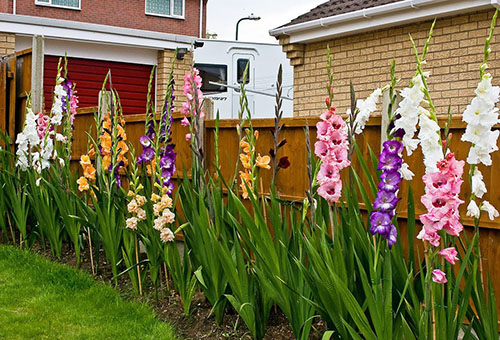
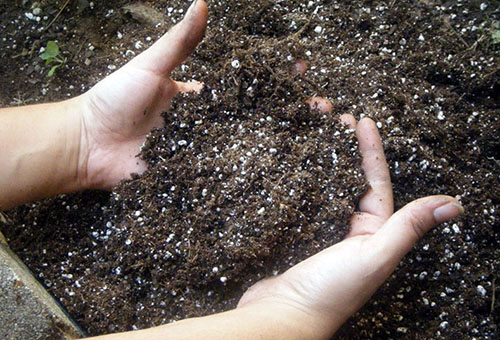
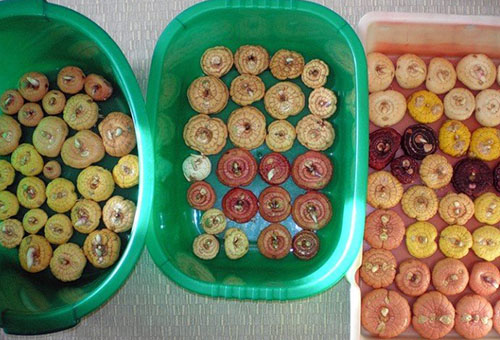
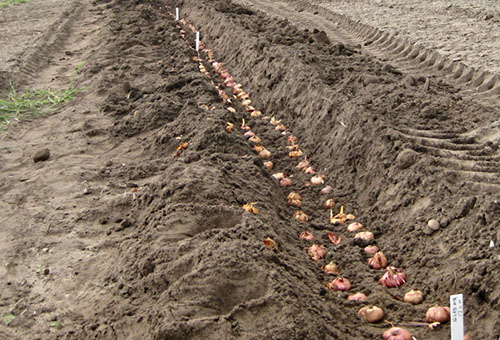
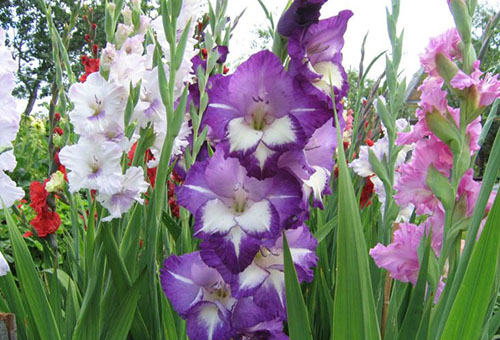
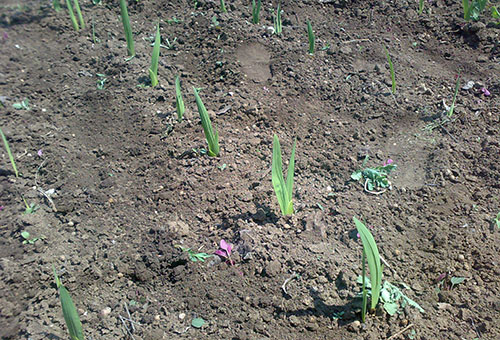
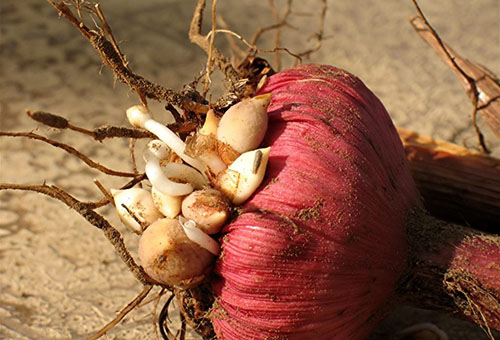
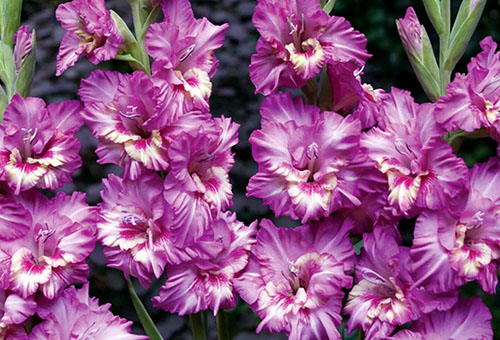
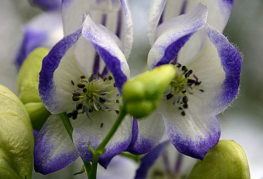
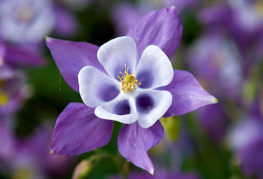
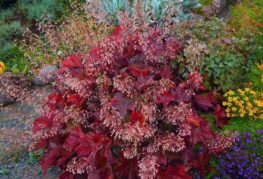

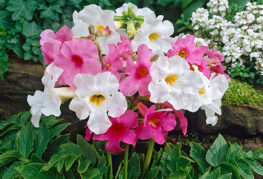
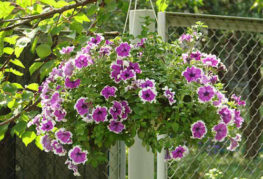
and will be published shortly.